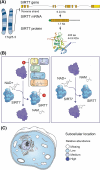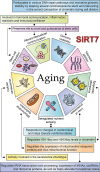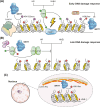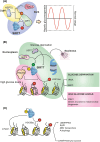SIRT7 in the aging process
- PMID: 35585284
- PMCID: PMC9117384
- DOI: 10.1007/s00018-022-04342-x
SIRT7 in the aging process
Abstract
Aging is the result of the accumulation of a wide variety of molecular and cellular damage over time. This has been associated with a number of features termed hallmarks of aging, including genomic instability, loss of proteostasis, telomere attrition, dysregulated nutrient sensing, mitochondrial dysfunction, cellular senescence, stem cell exhaustion, and impaired intercellular communication. On the other hand, sirtuins are enzymes with an important role in aging and life extension, of which humans have seven paralogs (SIRT1 to SIRT7). SIRT7 is the least studied sirtuin to date, but it has been reported to serve important functions, such as promoting ribosomal RNA expression, aiding in DNA damage repair, and regulating chromatin compaction. Several studies have established a close relationship between SIRT7 and age-related processes, but knowledge in this area is still scarce. Therefore, the purpose of this review was to analyze how SIRT7 is associated with each of the hallmarks of aging, as well as with some of age-associated diseases, such as cardiovascular diseases, obesity, osteoporosis, and cancer.
Keywords: Aging-associated diseases; Hallmarks of aging; Nucleolus; Ribosomal RNA; Sirtuins.
© 2022. The Author(s).
Conflict of interest statement
The author declares no conflict of interest.
Figures






References
Publication types
MeSH terms
Substances
LinkOut - more resources
Full Text Sources
Medical

